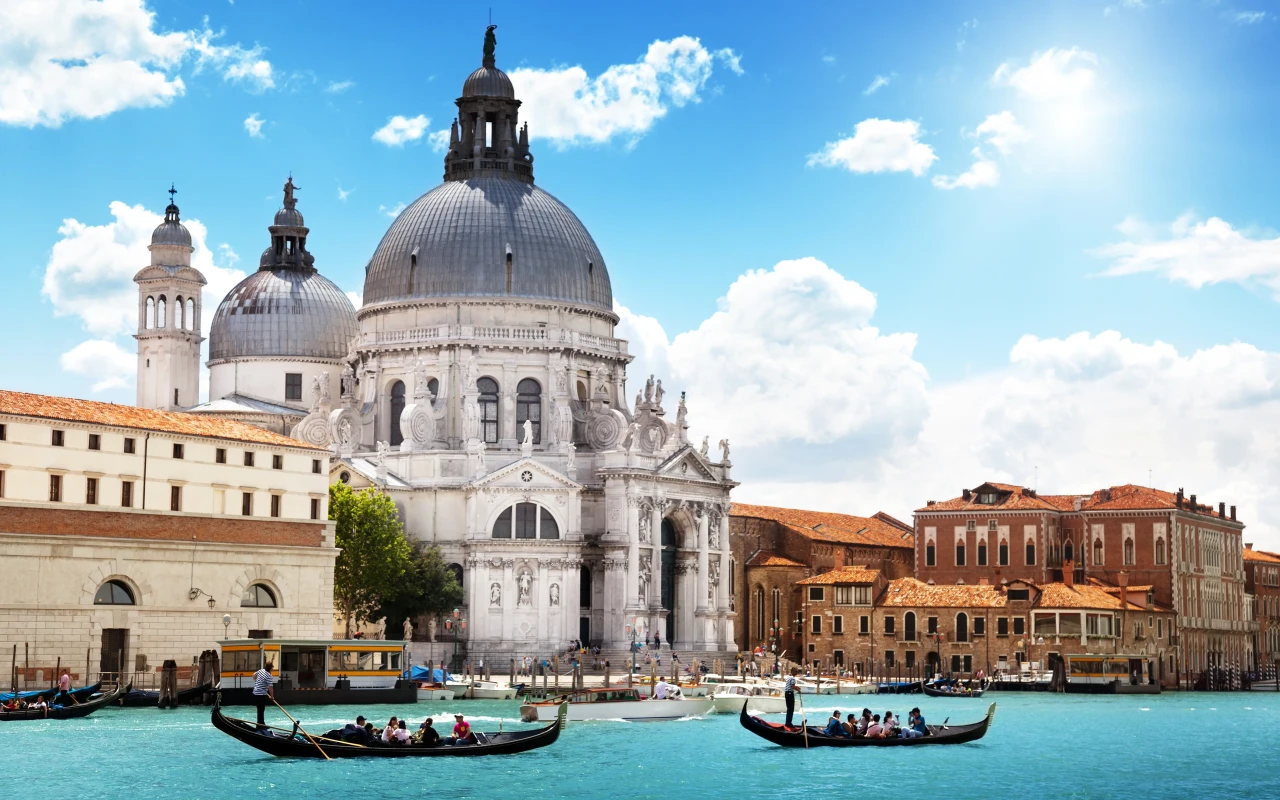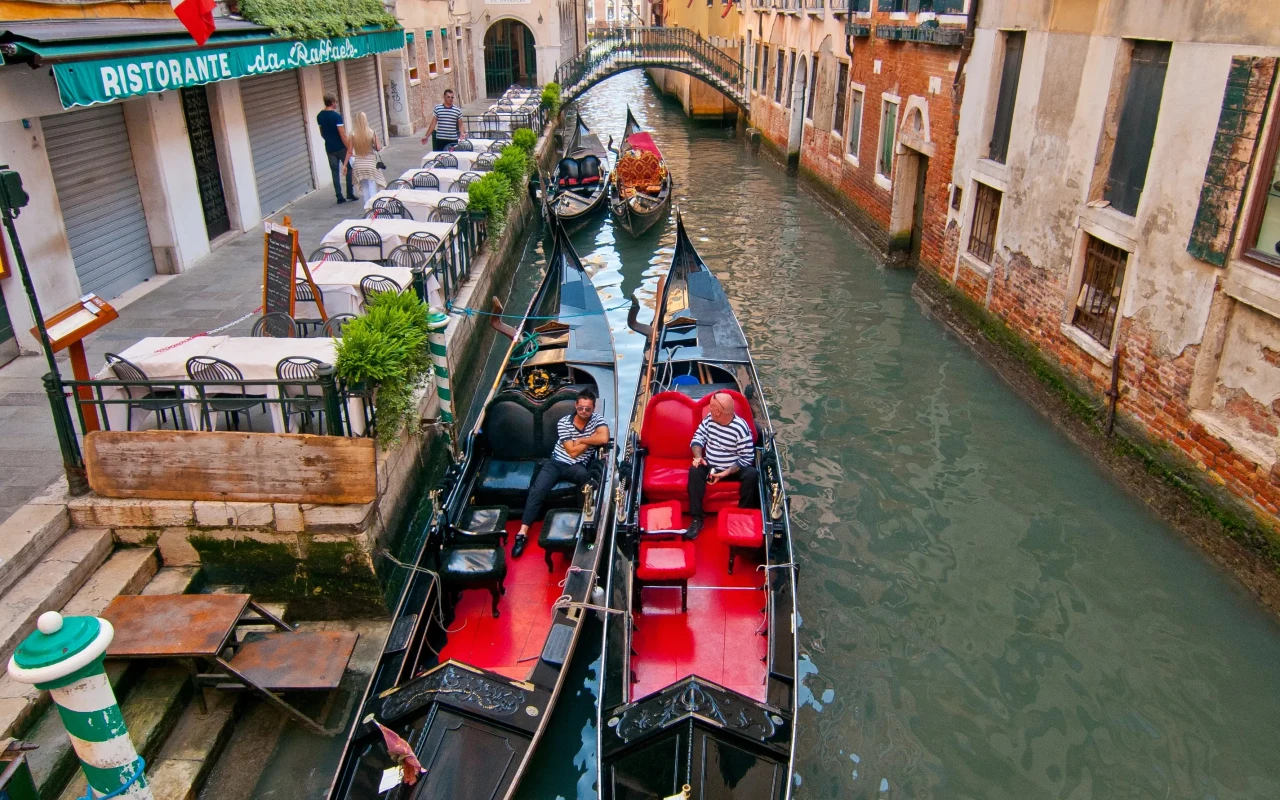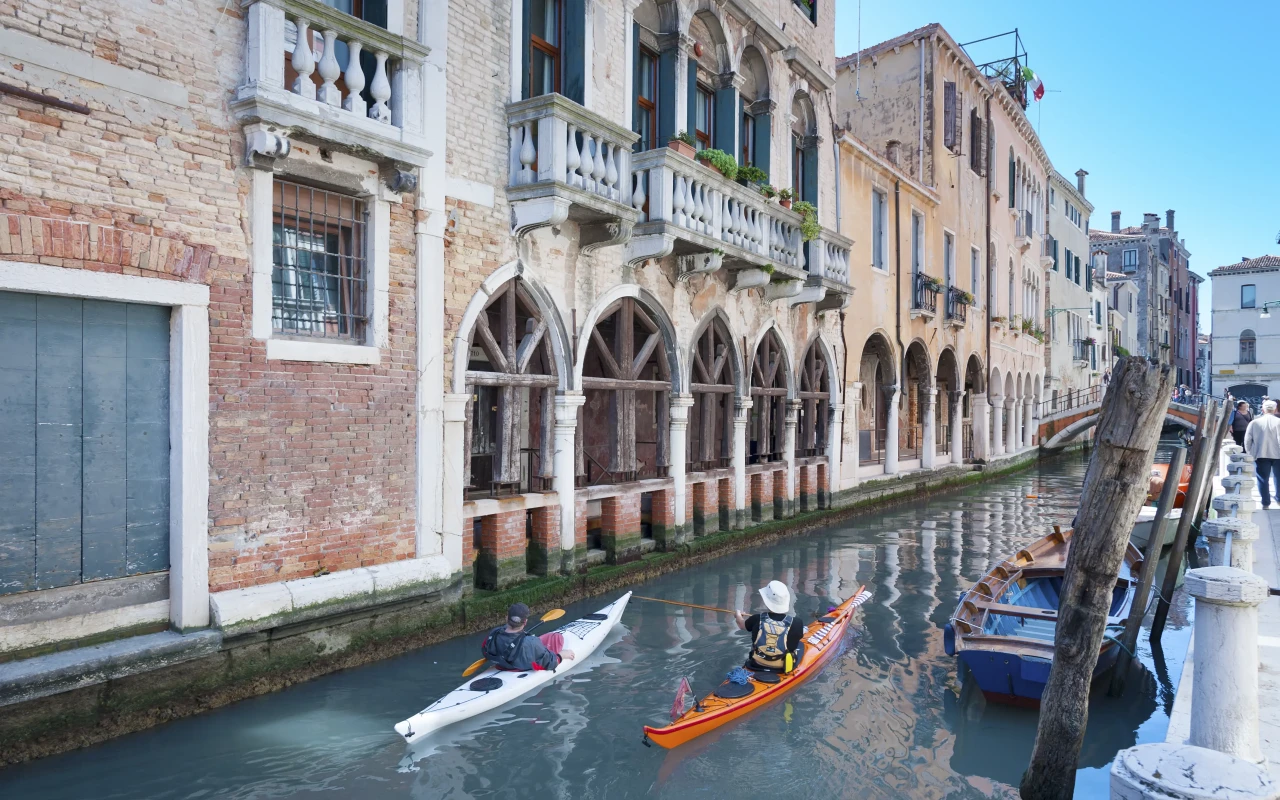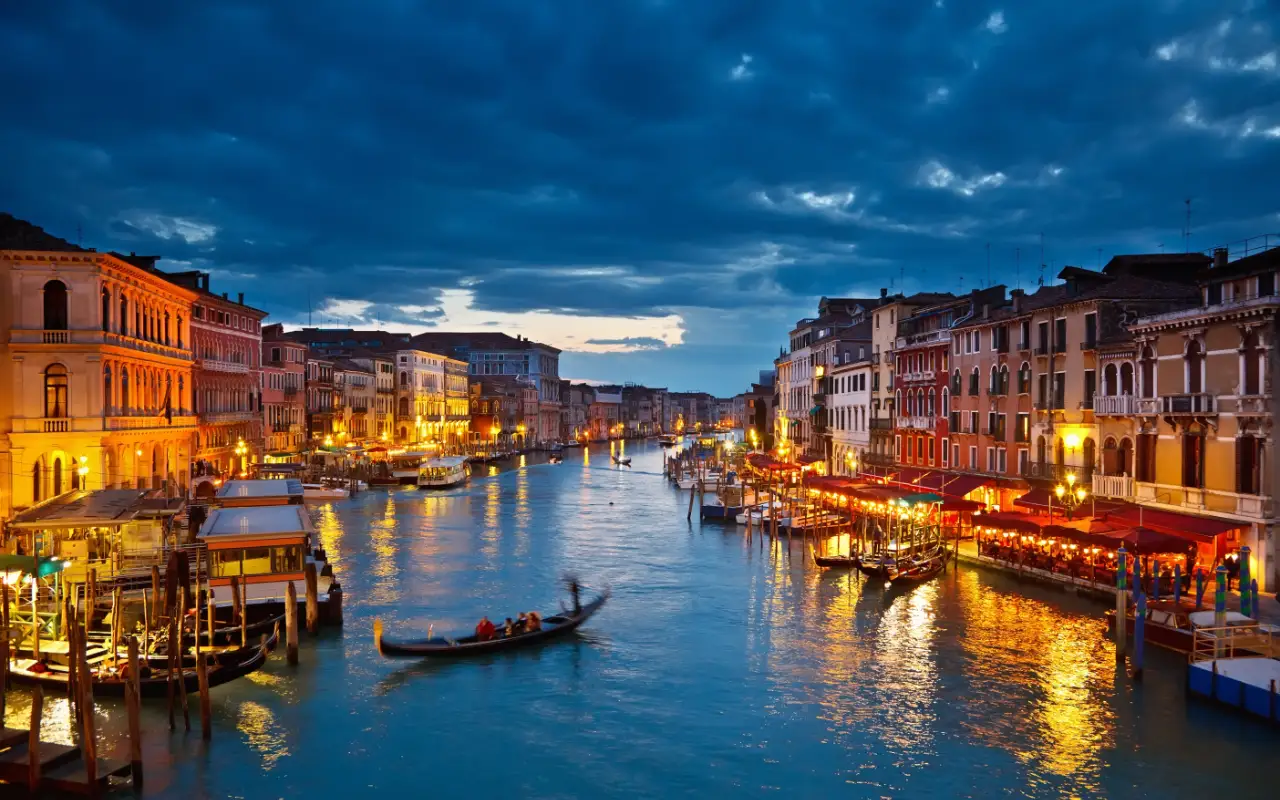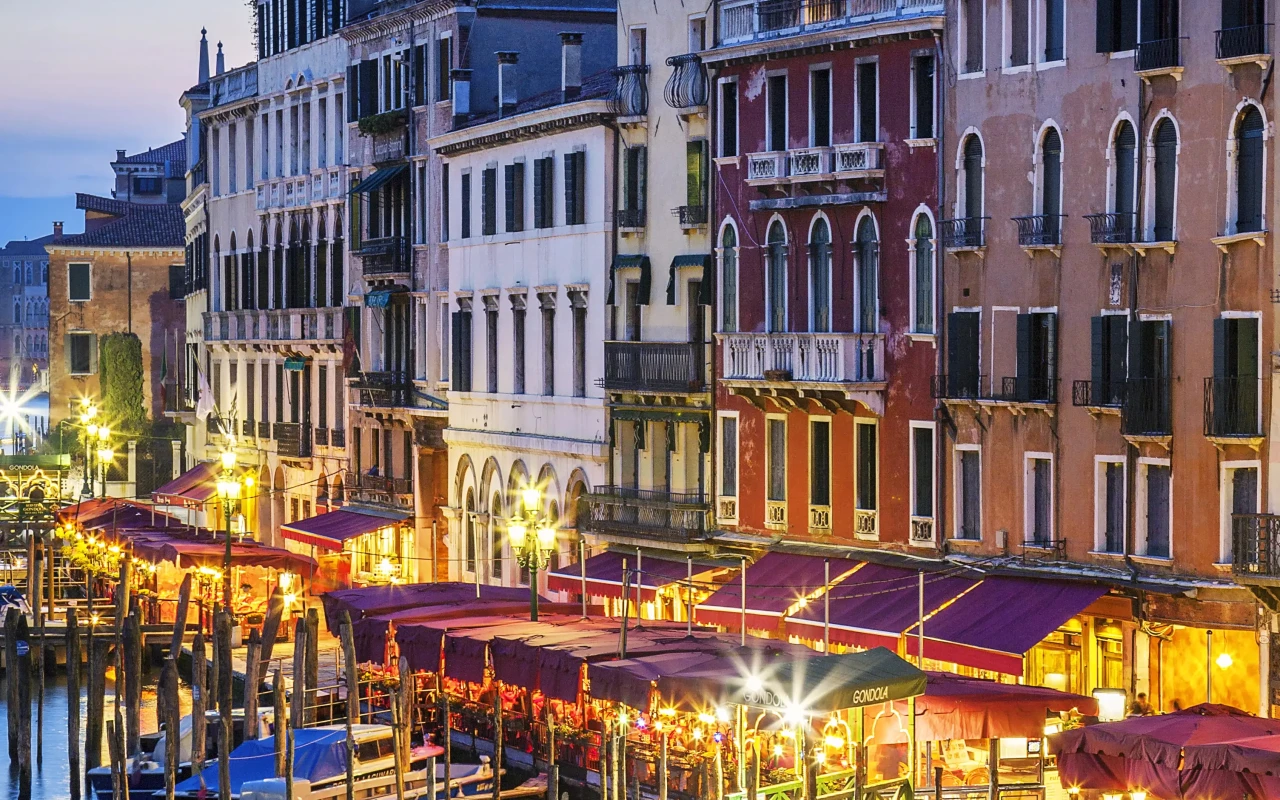Claim to Fame
A gondola ride on the Grand Canal is Venice’s most iconic experience — offering timeless views from the water, just as locals traveled centuries ago.
📌 Navigating Grand Canal : Answers to Frequently Asked Questions
- Admission Fee: No admission fee is required to view the Grand Canal, but boat services like vaporettos, gondolas, and water taxis have varying fees.
- How Long to Visit: The time spent at the Grand Canal varies, from a short boat ride to a full day exploring the various sites and neighborhoods along its banks.
- Washrooms: Public restrooms are scarce and may require a small fee. Facilities are available at some restaurants and public buildings for customers.
- Hours of Operation: The Grand Canal is accessible at all hours, with vaporetto services operating from early morning until late at night.
- Important Information: Venice's Grand Canal, a major water-traffic corridor, offers a picturesque and historic journey through the heart of the city, lined with magnificent buildings and bridges.
- Handicap Accessible: The Grand Canal is accessible to all, with vaporetto (water bus) services providing accessible transport options. However, getting on and off can be challenging depending on the dock and water levels.
- Pets: Pets are allowed on vaporettos but must be on a leash or in a pet carrier. It's less common to bring pets on gondolas or private water taxis.
- Guided Tours: Guided boat tours are available, providing historical insights and anecdotes about the famous buildings and bridges lining the canal.
- Restaurant or Cafe: Dining options are plentiful along the Grand Canal, with many restaurants offering waterside seating for a scenic meal experience.
- Gift Shop: Gift shops and boutiques line the Grand Canal, offering a variety of Venetian goods, from luxury brands to local crafts and souvenirs.
- Parking: Parking is not available directly along the Grand Canal, as Venice is a car-free city. Visitors typically park on the mainland or at Piazzale Roma and use water transport or walk.
- Family Friendly: The Grand Canal experience is family-friendly, offering the charm of Venice from a unique vantage point suitable for all ages.
- Photography: Photography is highly encouraged along the Grand Canal, capturing the historic buildings, gondolas, and vibrant waterway life.
- WIFI: Public WIFI is not available on the water, but some nearby cafes and establishments along the canal may offer access to their customers.
- Picnic Area: There are no designated picnic areas directly on the Grand Canal, but visitors can find spots in nearby squares or gardens for a quick snack.
Photos of Grand Canal
Gliding along the Grand Canal in a gondola is one of the world’s most romantic and recognizable travel moments. With its sweeping views of palazzos, bridges, and hidden alleys, the ride offers a perspective of Venice you simply can’t get on foot.
What to Expect
You’ll be serenely rowed by a gondolier in traditional attire through a mix of wide and narrow canals. Standard rides last about 30–40 minutes and often pass under iconic bridges and past major landmarks. Gondolas seat up to 5 or 6 people.
Background and Cultural Context
Gondolas have been used in Venice since the 11th century and were the primary means of transport for centuries. Today they remain handcrafted works of art, each made from over 200 pieces of wood. Riding one is a cultural experience as much as a scenic one.
Best Time to Ride
Sunset is the most atmospheric, but evening rides with illuminated buildings are magical too. Mornings tend to be quieter and better for photos.
How to Get There
Gondolas can be boarded at major locations like Piazzale Roma, Rialto, and San Marco. You can also find quieter starting points in neighborhoods like San Polo or Dorsoduro.
Photo Opportunities
Take wide-angle shots from within the gondola. Highlights include reflections in the water, views of the Rialto Bridge, and close-ups of your gondolier in action.
Travel Tips
- Prices are standardized but posted per ride — not per person.
- Evening and night rides cost more — be sure to confirm the rate upfront.
- Don’t expect a serenade unless you’ve arranged for it specifically.
FAQs
How much does it cost?
Around €80 for 30 minutes during the day; more in the evening.
Can I book in advance?
Yes, especially for romantic or private tours.
Is it touristy?
Yes — but still worth doing once for the beauty and perspective.
Final Thoughts
A gondola ride is the quintessential Venice memory. Whether you're celebrating something special or simply soaking up the magic of the city, there's no better way to experience its waterways.

